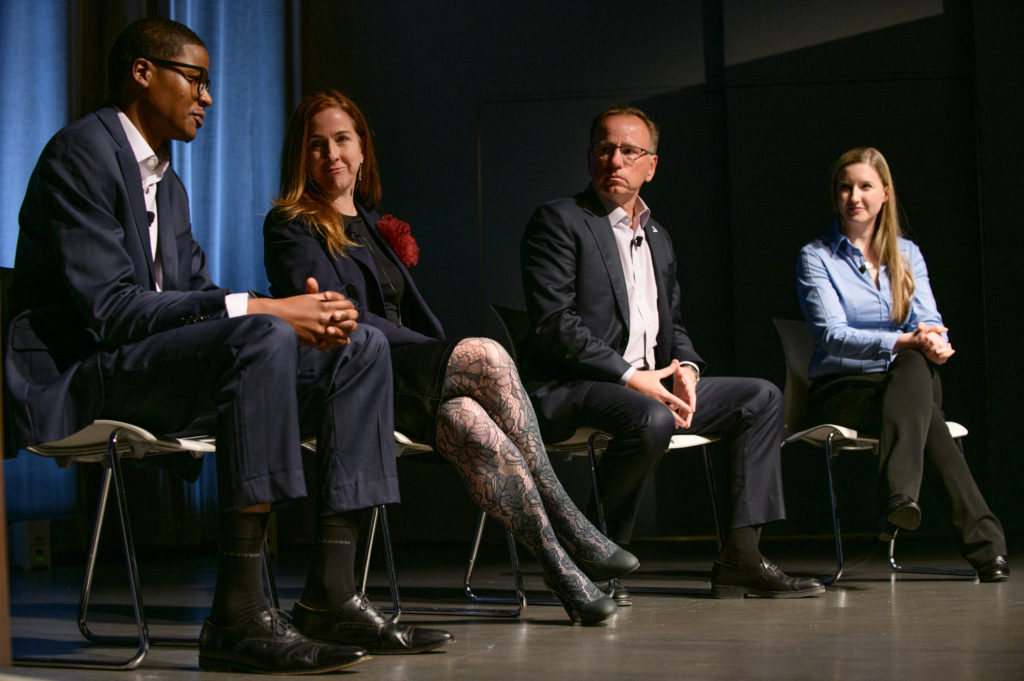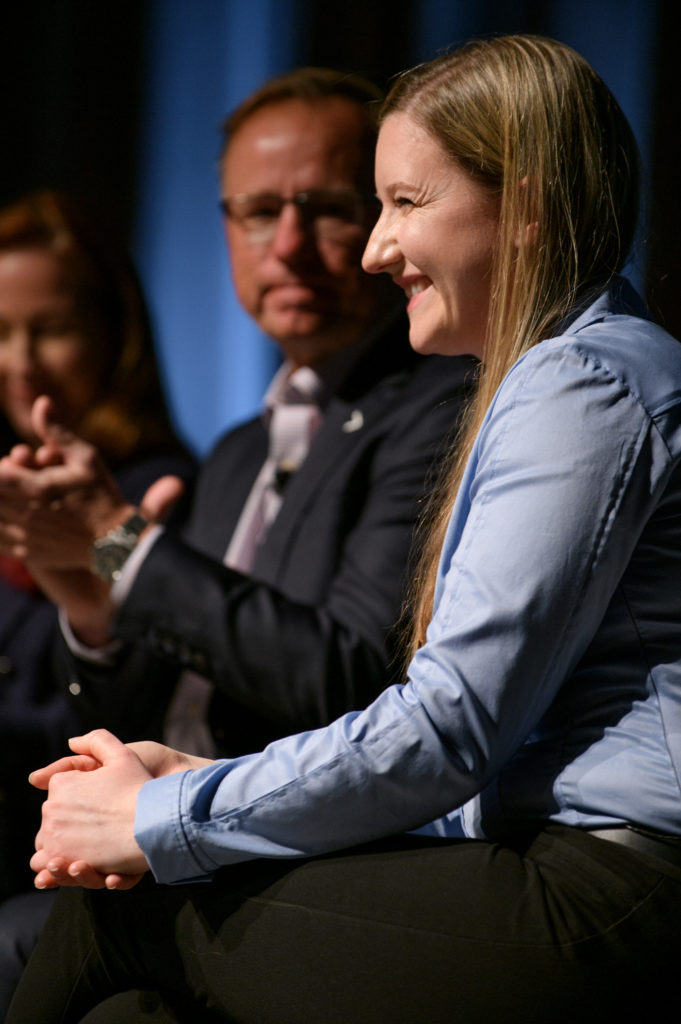Earn and Learn: How Apprenticeships Can Close the Skills Gap


Ed Richardson thought he was at a dead end five years ago. Employed as a security guard after attending community college, he was looking for a way to continue his education and jump-start his career. Researching online, he spotted the apprenticeship program at Aon, the professional-services firm.
“I couldn’t believe the opportunity. It said ‘no corporate experience, and we’ll put you through school,’” he said. “That’s the kind of opportunity I was looking for, and it made a lot of sense.”
Richardson was hired as part of Aon’s inaugural class of apprentices, working 25 hours a week in the reinsurance-broking department while attending school 15 hours a week. After about two years of gaining knowledge through both his coursework and hands-on experience at Aon, he accepted a full-time position with the company as a broker. He now helps large insurance clients and government agencies transfer their risk into the reinsurance market.
“I can’t believe I know half the things I know. I was just an apprentice a couple of years ago,” Richardson told an audience during a panel discussion at From Day One’s March conference in Chicago. “I've been enjoying every minute of it.” He also mentors new apprentices in the program, which has expanded into additional cities and states.
Historical Roots of Apprenticeships
Taking a cue from the skilled trades, professional apprenticeships are playing an increasingly important role in closing the skills gap in the corporate sector. Aon, Accenture and Zurich North America co-founded the Chicago Apprentice Network in 2017. Today, the network has grown to more than 70 companies, both small and large, including McDonald’s, Walgreens and JPMorgan Chase. Spanning sectors from finance, technology and consulting to retail and manufacturing, it is also expanding geographically, into the metropolitan areas of Washington, D.C., Philadelphia, New York City, Minneapolis, Houston, and Northern California.

Organizations in the network develop their own apprenticeship models. “We don't require everybody to run the exact same thing,” said Jim Coleman, senior managing director in Accenture’s Chicago office. “There are some principles which are really centered around giving people opportunity who are coming from a non-traditional background–giving them an opportunity to learn, giving them an opportunity to earn, and ultimately get full-time employment with your organization.”
Accenture’s model draws participants from community colleges and non-profit organizations for a 12-month format that combines education, on-the-job training and coaching to offer a path to full-time employment with the company.
Insurer Zurich North America began its program by offering insurance apprenticeships in partnership with Harper College, and has since added cybersecurity, IT, and other tracks. Apprentices earn a full-time salary, benefits and tuition coverage, and a promotion upon completion of the two-year program. Aon partnered with City Colleges of Chicago and the College of Lake County for a two-year program. Students take on roles in commercial risk, information technology, finance, human resources and other fields while studying relevant courses to earn an associate degree.
To date, almost 1,500 apprentices have launched careers at employers that have joined the Chicago-based apprenticeship initiative.
Bridget Gainer, global head of public affairs and policy at Aon, said the company had in mind two important goals, bolstering diversity within its ranks and retaining entry-level talent, when it started looking at apprenticeship models. The concept is common in Europe, and many senior employees within Aon began their careers as apprentices straight out of high school, she noted. It is also similar to a local tradition in which high-school graduates go to work at the Chicago Board of Trade or Chicago Mercantile Exchange and learn on the job. “We thought, if that model has worked for hundreds of years and it also works in the financial services sector in our own city, maybe we should give it a try,” Gainer said.
Aon re-examined its entry-level positions to ask whether a four-year degree was really necessary for every function, or whether the practice of recruiting college graduates had simply become a habit. The company saw that certain skills could be learned on the job by candidates with aptitude and ambition. “One of the things that I would encourage everyone here to do is really think about what does your entry-level population look like, and how could it potentially look different?,” Gainer said.
A key component of the apprenticeship experience is the connection that participants make with colleagues in their own organizations as well as those working in similar roles at other companies in the network. “It gives people experience and exposure to a corporate infrastructure that they may not have ever come across,” Gainer explained.
How to Get an Apprenticeship Program Launched
She advises companies thinking about starting an apprenticeship program to consider keeping the focus narrow at first to avoid becoming overwhelmed, and then let the momentum grow organically. A pragmatic approach could involve beginning with a handful of departments close to one leader who is spearheading the effort to make the recruitment strategy easier to execute. From there, cross-pollination within the organization starts to happen, as people become exposed to new opportunities on their own. “You might be surprised to see even where it goes,” she said.

Apprenticeships offer a way for an organization to support job seekers who may not have had the oppportunity to get a four-year degree. But companies gain more than the satisfaction of doing good in the community. For Accenture, a sprawling operation with more than 700,000 employees around the world, the need to bring new talent into the firm continuously to support its growth is a driving force behind the apprenticeship program, Coleman said. "It’s a great opportunity to give back and do something a little bit different, but more importantly, to feed your organization,” he said.
Apprentices bring not just talent, but eagerness and commitment. About 90% of those who have come through Accenture's program in Chicago have received full-time offers from the consulting firm, and retention rates for apprentices in the company are “through the roof,” Coleman said. Accenture recently set a goal to hire 20% of its almost 5,000 new employees a year from non-traditional backgrounds.
“The reason we’ve been able to scale the program is because it is not a philanthropy. Our philanthropy budgets are limited. Our ability to hire talent is unlimited,” Coleman said. “We need folks who can do the work, who are committed to doing the work, and who can do it really, really, really well.”
Danica Lohja, part of Accenture’s first apprentice cohort in 2016, met the challenge. An immigrant from Serbia who settled in Chicago in her 20s, she earned an associate degree in computer information systems, then went to work managing suppliers for an appliance retailer. When her school later reached out to her about Accenture’s apprentice program, which was then just starting up, she was interested.
Today, she calls the experience “life changing.” Hired as an analyst at Accenture in 2017, Lohja has since been promoted three times. As an apprentice, she participated in team-building and training activities and traveled for the company, while receiving a salary and full benefits. “This program has meant the world to me,” she said. “Today I am an associate manager and for me the sky’s the limit."
Companies interested in starting their own apprenticeship programs can reach out to members of the Chicago network for how-to guides, case studies and more, and are invited to attend the group’s quarterly networking events, Gainer and Coleman emphasized. “Our commitment to this is deep, and our commitment to helping others do this is deep,” Coleman said.
Susan Kelly is a veteran business journalist based in Chicago.
The From Day One Newsletter is a monthly roundup of articles, features, and editorials on innovative ways for companies to forge stronger relationships with their employees, customers, and communities.